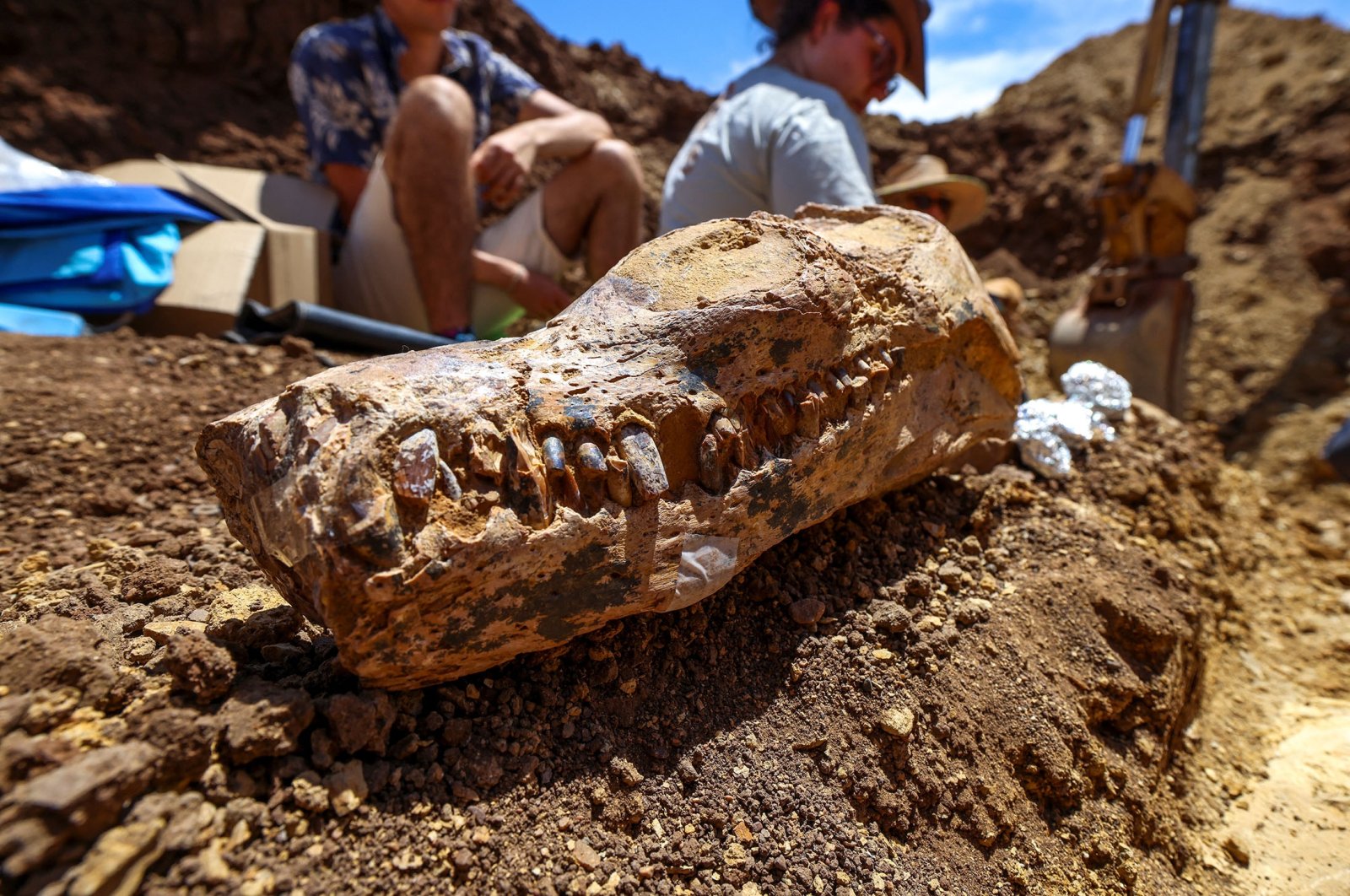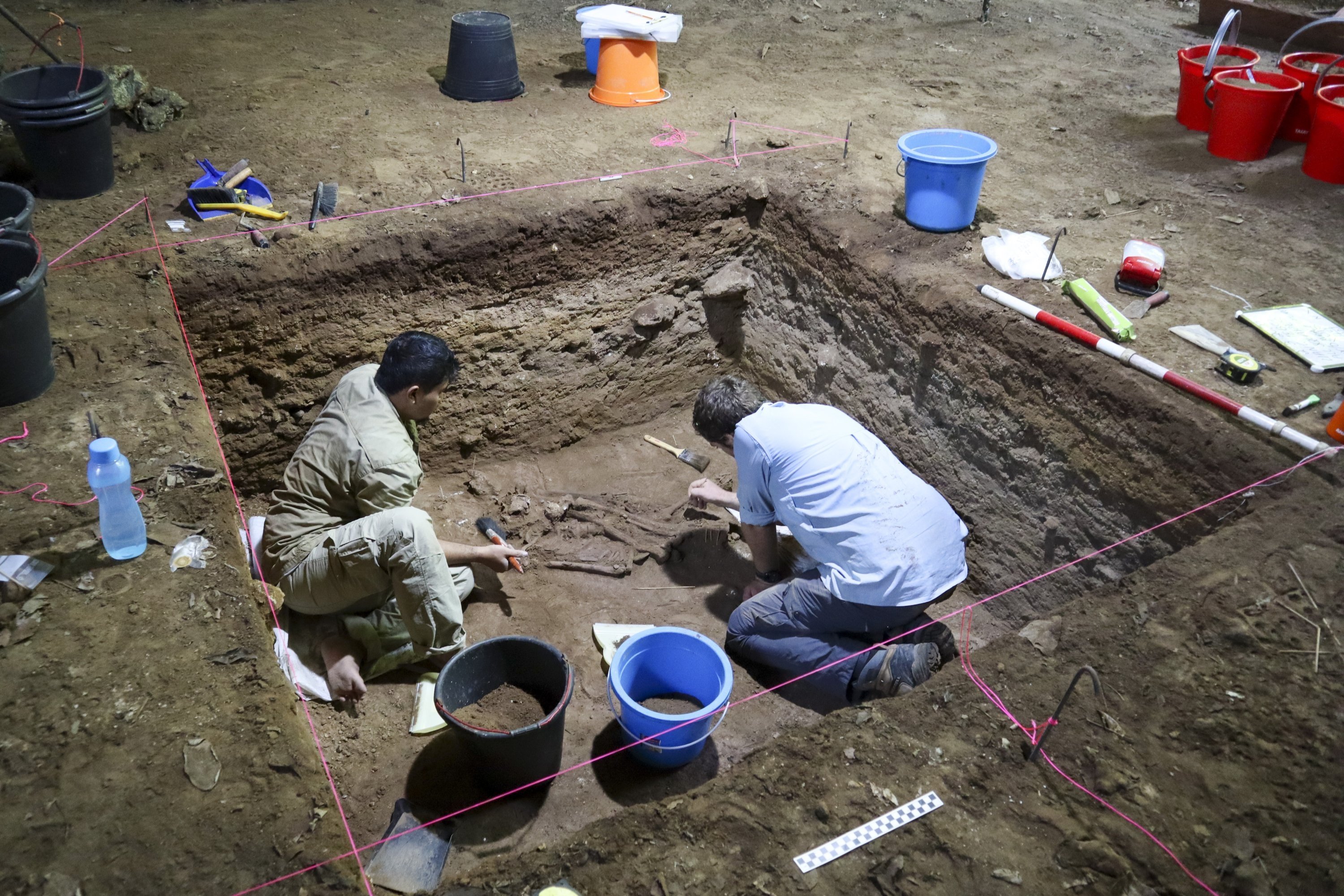Scientists made remarkable discoveries in the fields of archeology and paleontology in 2022 that shed new light on history, like the “diver” dinosaur fossil unearthed in Mongolia, the oldest human fossil discovered in Spain and the oldest known predator fossil found in England, which stood out as some of the most striking.
Dinosaurs had a particular spotlight in terms of discovery in 2022 as a new species of “predatory and diving dinosaur” has been discovered in Mongolia, which has an “aerodynamic body” similar to modern diving birds such as penguins, and also does not fly.

The fossil is the first known example of a non-flying and bipedal carnivorous dinosaur species, which was named “Natovenator polydontus,” meaning “many teethed swimming predators.”
Scientists have unearthed a dinosaur fossil thought to date from about 201 to 252 million years ago in the Southeast African country of Zimbabwe. In the research published after the fossil was examined, it was reported that the find is the oldest fossil ever discovered in Africa.
An ancient human fossil, estimated to be 1.4 million years old, was found at the Atapuerca archaeological excavation site near the city of Burgos in northern Spain. Experts argue this fossil is the oldest human fossil ever discovered on the European continent.
 A skull of the large early tetrapod and apex predator Whatcheeria, which lived an amphibious lifestyle around 330 million years ago, is seen in the collections of the Field Museum, in Chicago, Illinois, U.S. (Reuters Photo)
A skull of the large early tetrapod and apex predator Whatcheeria, which lived an amphibious lifestyle around 330 million years ago, is seen in the collections of the Field Museum, in Chicago, Illinois, U.S. (Reuters Photo)
Oldest predator fossil
Two new discoveries were made in archaeological excavations in England, and both the remains of Europe’s “largest land dinosaur ever” and the oldest known predator fossil were found in the country.
In one of these expeditions, paleontologists found the remains of a predator over 10 meters (32 feet) long and estimated to have lived about 125 million years ago. It was reported that the bones found on the southwest coast of the Isle of Wight in England belonged to a bipedal, crocodile-faced, predatory spinosaurid dinosaur.
It was also stated that the 560-million-year-old fossil found in England is thought to be the ancestor of the “cnidarian” species, which currently includes jellyfish. While this fossil sheds light on a 20-million-year-old history of predators, the 20-centimeter (7.87-inch) fossil is also thought to be the first example of an organism with a true skeleton.
On the other hand, in the South American country of Argentina, paleontologists discovered a previously unknown “armless” dinosaur species, with the new species being named “Guemesia ochoai.” Paleontologists pointed out that the skull of this armless dinosaur was quite small and the dinosaur is the only one of its kind found in northwest Argentina.
2,300-year-old Tuscan statues
In Italy’s Tuscany, 24 well-preserved ancient bronze statues 2,300 years old have also been unearthed this year. The sculptures were discovered during excavations in San Casciano dei Bagni where thermal pools are quite common. It was reported that the sculptures were extremely well-preserved thanks to the mud at the bottom of the pool they were found. The sculptures belong to a period between the second century B.C. and the first century A.D. It was noted that there are some gods and emperor statues belonging to Greek and Roman mythology among the works.
 Archaeologists work at the site in a cave in East Kalimantan, Borneo, Indonesia, Sept. 8, 2022. (AP Photo)
Archaeologists work at the site in a cave in East Kalimantan, Borneo, Indonesia, Sept. 8, 2022. (AP Photo)
First ever amputation
One of the discoveries of the scientific world that shed light on history took place on the island of Borneo in South Asia. As a result of the examination of the remains collected from the teeth and surroundings of a skeleton discovered on the island, it was determined that the skeleton was 31,000 years old and that one leg of the skeleton was cut off. Scientists reported that this cutoff leg could be the first amputation in history, a deduction that was influenced by the shape of the cut.
Shipwrecks and gods
Wooden shipwrecks dating from the 1800s were found as a result of coastal erosion in the United States in Florida. It has been reported that a part of the ship, which is estimated to be 25 to 30 meters in size, belonging to the 19th century, which was under the sand for about 200 years in Florida, came up to the surface after coastal erosion because of Hurricanes Ian and Nicole in the country.
Meanwhile, in the Sinai Peninsula region of Egypt, the remains of a temple belonging to the Roman Empire, which ruled the country between 30 B.C. and 395 A.D., were discovered. As a result of the work of Egyptian archaeologists, the ruins of the temple belonging to Zeus Cassius, who was accepted as a god during Roman times, were unearthed.
Source: dailysabah.com








